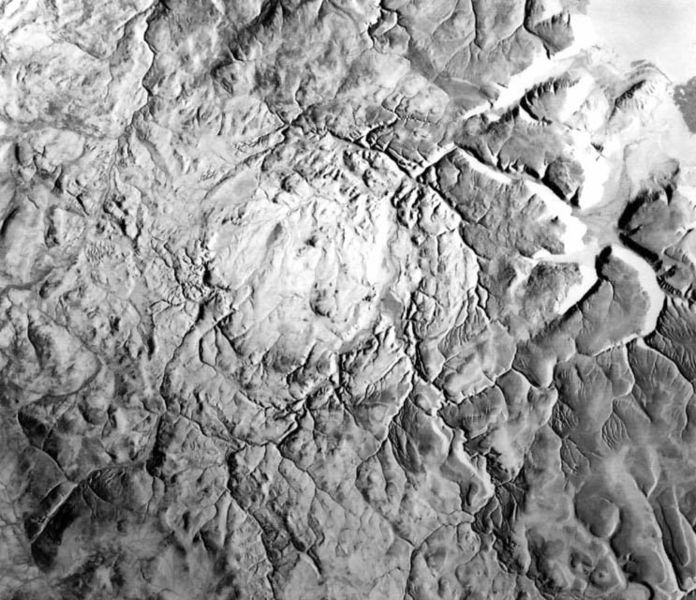Summer temperature rises barely about 8C.
The average annual temperature is -16C.
But for scientist and researchers, Devon Island is an extremely interesting place.
Its desert setting and harsh climate is very similar to conditions on Mars.
K10 Rover “Red” descending Drill Hill toward base camp at Haughton Crater Devon Island, Nunavut.
The incident was so violent that rocks as far below as 1.7 km was brought up to the surface.
Because there is no flowing water due to the freezing temperature, weathering is minimal.
As such, Haughton retains many geological features that craters elsewhere lose to erosion.
The Haughton impact crater area is said to have one of the most Mars-like terrain on earth.
Devon Island is not entirely devoid of life.
The lowlands are poorly drained favoring the growth of some moss over which Musk-Oxen graze year-round.
The cold and wet soil is inhabited by invertebrates such as worms, protozoa, midge and fly larvae.
The island also has a few bird population.
Radar image of the Haughton impact crater.
Photo credit:Denni/Wikimedia
FMARS habitat.
Photo credit:Brian Shiro/Wikimedia
Crew 7 members on a motorized EVA on Devon Island in July 2002.
Photo credit:The Mars Society/Wikimedia
Truelove Lowlands, Devon Island, Nunavut, Canada.
Photo credit:Martin Brummell/Wikimedia
K10 Black performing a site survey at Haughton Crater, Devon Island, Canada.
Photo credit:Matt Deans/NASA
The Haughton-Mars Project (HMP) Research Station.
Photo credit: NASA
Source:Wikipedia/The Canadian Encyclopedia/NASA.gov/Mars Institute









